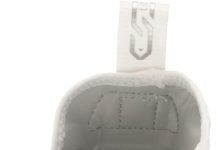Lace-up your boots and prepare for some footwork on the field as we explore the age-old question: are metal cleats more expensive than plastic?
Whether you’re a seasoned athlete or an amateur enthusiast, the choice of cleats can significantly impact not only your performance but also your wallet.
In this article, we will disentangle the complexities of the cleat market, comparing the prices of metal and plastic options to uncover which one might cost you a pretty penny.
So, let’s kick off our investigation into the world of cleat economics and find out if metal means more money!
Cost Comparison
The cost is often a significant consideration when choosing between metal and plastic cleats. While the price difference between the two types may exist, several factors contribute to this disparity.
Review contents
Factors Affecting Price Difference
The initial price of the cleats is one factor that can influence the cost difference. Metal cleats tend to be more expensive upfront compared to their plastic counterparts. This is primarily due to the materials used in manufacturing metal cleats, which are generally more durable and provide better traction.
However, it is essential to consider the long-term durability of the cleats. While metal cleats may have a higher initial price, their long-lasting quality may compensate for the higher cost. Conversely, Plastic cleats may be more affordable upfront but may wear down quickly, necessitating frequent replacements.
Another factor that affects the cost comparison is the maintenance cost. Metal cleats typically require more maintenance, such as regular cleaning and occasional replacement of worn-out spikes. These maintenance expenses can add up over time, whereas plastic cleats require minimal maintenance.
Performance Comparison
It is crucial to consider their performance on the field to make an informed decision between metal and plastic cleats. Several vital aspects contribute to the overall performance of cleats.
Traction and Stability
Metal cleats are known for their excellent traction on various surfaces. The metal spikes on the sole provide superior grip, especially on soft, muddy, or uneven terrains. This increased traction translates to improved stability, allowing players to confidently make sharp turns and sudden changes in direction.
Plastic cleats, on the other hand, may not offer the same level of traction as metal cleats. The plastic spikes are generally shorter and may not penetrate the surface as effectively. This can result in reduced stability and potentially impact the player’s ability to perform at their best.
Comfort and Fit
When it comes to comfort and fit, both metal and plastic cleats have their advantages. Metal cleats often provide a snugger fit due to their more rigid construction. This can enhance support and prevent foot movement inside the shoe, reducing the risk of blisters or injuries.
Plastic cleats, on the other hand, tend to be more lightweight and flexible. This flexibility allows for more natural foot movement, providing a comfortable fit. However, it is essential to ensure that the plastic cleats offer sufficient support to prevent foot and ankle injuries.
Versatility
The versatility of cleats is a crucial consideration, especially for players who participate in different sports or play on various surfaces. Metal cleats excel on soft, wet grounds, offering optimal traction and stability. However, they may not be suitable for playing on turf or artificial grass, as the metal spikes can damage the surface.
Plastic cleats, on the other hand, are versatile and can be used on both natural and artificial surfaces. The shorter plastic spikes are less likely to cause damage, making them suitable for players who regularly switch between different playing surfaces.
Safety Comparison
The safety of the players should always be a priority when choosing cleats. Evaluating the risk of injury and the level of protection and support provided can help determine which type of cleats is more suitable.
Risk of Injury
Metal cleats, with their sharper and more rigid spikes, have the potential to cause injury. If a player accidentally steps on an opponent or gets stepped on, the metal spikes can result in cuts or puncture wounds. Moreover, metal cleats can be hazardous to other players if a collision occurs.
Plastic cleats, with their shorter and less sharp spikes, generally pose a lower risk of injury. While they may still cause minor abrasions or bruises, the impact is often less severe than metal cleats.
Protection and Support
Protection and support are crucial for athletes, particularly in high-impact sports. Metal cleats typically offer more support, especially around the ankle area, due to their rigid construction. This enhanced support can help reduce the risk of sprains and other foot and ankle injuries.
Although not as rigid as metal cleats, plastic cleats can still provide adequate support and protection. The focus is often on cushioning and comfort, which can benefit players prioritizing flexibility and agility over maximum support.
Playing Surface Considerations
The type of playing surface is an essential factor to consider when choosing between metal and plastic cleats. Each type of cleat has its compatibility and potential impact on different surfaces.
Compatibility with Different Surfaces
Metal cleats are primarily designed for natural grass surfaces, where their metal spikes can bite into the ground and provide excellent traction. They are particularly effective on soft, muddy, or wet fields, where maintaining stability is crucial.
Plastic cleats, on the other hand, are compatible with both natural and artificial surfaces. The shorter and less aggressive spikes are less likely to cause damage to turf or artificial grass, making plastic cleats a more versatile option for players who frequently play on various surfaces.
Potential Damage to Playing Surfaces
While metal cleats offer superior traction on natural grass, they can pose a risk to the playing surface. The metal spikes can potentially dig into the ground, creating holes or divots that may cause problems for future games or increase the risk of injuries for other players.
Plastic cleats are generally less damaging to playing surfaces. The shorter spikes are less likely to cause significant impact, minimizing potential damage to the grass or turf.
Environmental Impact
As the world becomes more conscious of environmental sustainability, considering the environmental impact of cleats is becoming increasingly important. Evaluating the sustainability of materials and recyclability and disposal options can help minimize the environmental impact.
Sustainability of Materials
Metal cleats are often made from materials such as steel or aluminum, which are non-renewable resources. The extraction and production of these metals can contribute to environmental degradation and carbon emissions.
Plastic cleats are typically made from synthetic materials such as rubber or thermoplastics. While these materials are also derived from non-renewable resources, technological advancements have developed more eco-friendly alternatives. Some manufacturers have started using recycled or bio-based materials to reduce environmental impact.
Recyclability and Disposal
The recyclability of cleats is another aspect to consider. Metal cleats, being primarily made from metal, can be easily recycled. However, it is crucial to ensure proper disposal of metal cleats to minimize environmental pollution caused by improperly discarded sharps.
Plastic cleats can also be recycled, although the process may depend on the type of plastic used. Some manufacturers provide recycling programs or accept old cleats for recycling to promote responsible disposal.
Market Demand and Availability
The market demand and availability of cleats can influence manufacturers’ options and pricing strategies. Considering these factors ensures that players can access various choices and competitive pricing.
Popularity and Demand
Metal cleats have been a popular choice among athletes, particularly in sports like baseball and softball. Their superior traction and stability on natural grass surfaces often drive the demand for metal cleats.
Plastic cleats, on the other hand, have gained popularity due to their versatility and compatibility with various playing surfaces. Many athletes and sports enthusiasts appreciate the convenience of using a single pair of cleats for different sports or surfaces.
Variety of Options
Both metal and plastic cleats offer a wide range of design, style, and functionality options. Manufacturers cater to athletes’ diverse needs and preferences by offering cleats with different features and technologies.
Pricing Strategies
The pricing strategies manufacturers employ can also vary between metal and plastic cleats. As metal cleats are more expensive upfront, manufacturers may position them as a premium option, targeting severe or professional athletes and prioritizing performance over price.
With their lower initial cost, plastic cleats may be a more affordable option for recreational players or those just starting.
Brand and Design Influence
Different manufacturers’ brand reputation, prestige, and innovative features can significantly influence decision-making. These factors allow players to choose cleats that meet their performance and stylistic preferences.
Brand Reputation and Prestige
Certain brands have established themselves as leaders in the cleats industry, known for their quality and performance. Athletes often have brand preferences based on reputation and personal experiences.
Opting for a reputable brand can provide reassurance regarding product quality and durability. Additionally, certain brands may offer specific features or technology that enhance on-field performance.
Innovative Features and Technology
The continuous development of new features and technology in cleat design can significantly impact performance. Manufacturers strive to incorporate innovative elements that improve traction, comfort, and overall functionality.
Different cleat models offer various innovative features, from advanced cushioning systems to enhanced sole designs. Players must assess these features and determine which ones align with their needs and playing style.
Level of Play
The level of play, whether at the youth and amateur levels or the professional level, can influence the choice between metal and plastic cleats. Each level of play has unique requirements and considerations.
Youth and Amateur Levels
At the youth and amateur levels, players are often still developing their skills and may not require the same level of performance or durability as professional athletes. In this case, plastic cleats may be a more suitable and cost-effective option.
Plastic cleats provide adequate traction and support for recreational play while being more affordable. Additionally, as young athletes tend to outgrow their cleats quickly, choosing plastic cleats allows for easier and more frequent replacements without breaking the bank.
Professional Levels
Many athletes prefer metal cleats at the professional level, where performance and durability are of utmost importance. The superior traction and stability provided by metal spikes can significantly impact an athlete’s performance in competitive sports.
Professional athletes often rely on their cleats for the best grip and support, especially during high-intensity games. The additional durability of metal cleats ensures they can withstand the rigorous demands of professional play.
Additional Considerations
While the previous sections covered essential factors to consider, a few more aspects may influence the decision-making process.
Personal Preference
Ultimately, personal preference plays a significant role in selecting cleats. Some players prefer the feel of metal cleats, while others prefer plastic cleats’ flexibility and lightweight nature. Trying on both types and considering individual preferences can help determine the most suitable option.
Fashion Trends
Fashion trends can also influence the choice between metal and plastic cleats. Some players may prioritize the aesthetics of their cleats, opting for a particular style or color that matches their team uniform or personal taste.
Customization Options
The ability to customize cleats is another factor that may sway the decision. Some manufacturers offer customization services, allowing players to personalize their cleats with their name, team logo, or other design elements. This level of customization can add a unique touch and further enhance the personal connection to the cleats.
Conclusion
In conclusion, the cost, performance, safety, playing surface considerations, environmental impact, market demand, brand and design influence, level of play, and additional factors all contribute to the decision between metal and plastic cleats.
While metal cleats may have a higher initial cost and maintenance requirement, they often provide superior traction, stability, and support. Plastic cleats, on the other hand, are more versatile, compatible with different surfaces, and generally less damaging to playing fields.
Ultimately, personal preference, fashion trends, and customization options should also be considered when making the final decision.





































